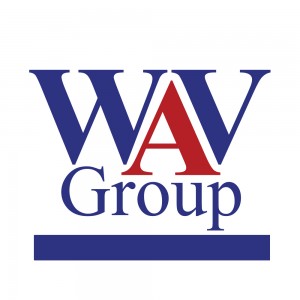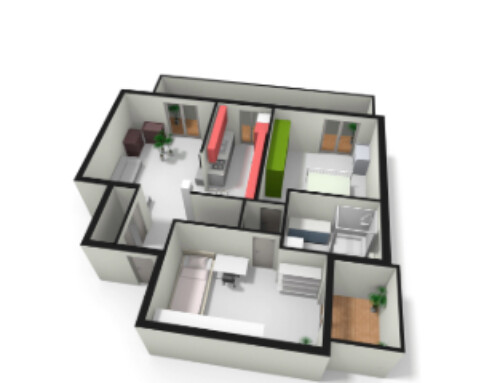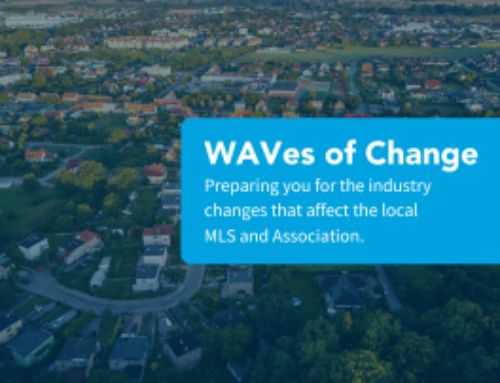 We all know there are too many MLSs in the US. It’s just a fact. MLSs were originally set up according to Board boundaries established by NAR based on market areas that existed many years ago. Times and technology have changed everything. Real estate market areas have expanded far faster then our industry has responded so in many areas of the country we have multiple MLSs serving areas that should logically be served by one.
We all know there are too many MLSs in the US. It’s just a fact. MLSs were originally set up according to Board boundaries established by NAR based on market areas that existed many years ago. Times and technology have changed everything. Real estate market areas have expanded far faster then our industry has responded so in many areas of the country we have multiple MLSs serving areas that should logically be served by one.
It is hard to argue that cooperation and ultimately consolidation is good for everyone involved in buying and selling real estate. Brokers and agents who work in areas where successful consolidation has taken place now have access to the greater territory with a single technology interface. Multiple MLS fees are eliminated. Brokers are able to get data feeds for their true market areas from a single source. MLSs that offer public search sites can now serve a wider group of consumers through a single interface. It all just makes sense yet across the country we see example after example of MLSs that continue to work side by side competes with other MLSs that really should all be combined?
The Cause
Resistance to consolidation is not only caused by MLS staff afraid of losing their livelihood. This is certainly a factor at times but in many cases it is actually the local brokers who dig their heels in and fight consolidation. Why would they do this if what we said in the previous paragraph is true? Brokers that feel this way believe that opening up their market area through consolidation will unleash a rush of new competition into their area, which will ultimately hurt their business. They basically want to build a wall around their market so they can serve it exclusively. They want to keep the outsiders out. What is not being considered in this thinking, however, is the fact that local market knowledge is always critically important. Just having access to an area through a database doesn’t mean that you are in a position to help people buy or sell in an area. In addition, when boundaries are expanded that means the areas they can work in easily have expanded as well. Most importantly, consumers that need to have broader market information can now work with an agent that has access to the broader area. While there is certainly some truth to the notion that breaking down walls may create a different level of competition I can’t think of any example in business history where fighting change, that is ultimately good for the end consumer, is successful. The question is, do you embrace it as a change agent or do you choose to fight the tide? We all know that these changes will come eventually so why not be proactive and be a part of the transition?
If you are currently considering regionalization or consolidation in some form in your MLS here are some things to think about that will help the process go more smoothly.
Regionalization
Whenever MLSs regionalize there are multiple areas that need to be considered. A few of the major areas that will need to be addressed include:
• MLS technology being used by each MLS
• Contract terms with each vendor
• Database structure and property types
• Current MLS structure and ownership
• Board makeup and leadership rules
• NAR affiliation
If you are considering full regionalization all of these areas and more will be important to understand in detail. Data has to be aligned, technology has to be chosen and ownership structure has to be agreed upon. Existing contracts need to be considered as you determine the timelines of what can take place and any new organization needs to provide more than the component parts. This is a big task and it is only successful when the groups coming together place high value on the end result. Compromises obviously need to take place throughout the process and when we look at successful examples of regionals that have formed in the past in areas such as Southern California, Virginia/MD, Chicago, Philadelphia, Massachusetts, etc., they have had a clear vision and strong leadership that was able to move through these obstacles and challenges. It would be hard to find anyone in the areas, post regionalization, that would like to turn the clock back and go back to smaller, separate MLSs but all will also tell you the process took hard work and a lot of good people with open minds.
Things to consider
Whether you are ready for full regionalization or just looking at your options there are a number of steps you can take to help you evaluate and/or prepare for regionalization that can help the process go more smoothly.
Measure the overlap
One the first things to do before you jump into regionalization is to understand how important the need is. If you only have 5% of your members that are accessing neighboring MLSs maybe it isn’t such an urgent need. On the other hand, if you have 25% or more of your members paying dues to you your MLS and at least one other MLS it is clear the market area has shifted and you should be looking at regional options to address the issue. Work with your neighboring MLSs to clearly identify how much overlap you have with your neighboring MLSs.
Create a common database structure
There is frankly no good argument that I have ever heard that supports 900 different MLSs being on 900 different database layouts. It just doesn’t make sense. Consider working with neighboring MLSs to create a set of common property types, data fields and field choices. Even if you have multiple MLS system this standardization will make it easier for brokers who work in multiple MLSs and to share data if desired. Also, for agents that belong to more than one MLS having a common data format will make using any system that much easier. Down the road, if you choose to regionalize or even share an MLS system it will be made easier by this first step.
Review existing technology contracts
Another step to take when reviewing your regionalization options that makes sense is to see where everyone is today in terms of their vendor agreements. How many years is each MLS committed? What are the renewal options? What are the related technologies that may impact any change? What is the overall satisfaction of each MLS with their technology? Having a clear picture of contract timelines as well as MLS satisfaction with all technology that would be impacted is an important consideration. Regionals have been formed and technology chosen based on contract expiration dates in some cases rather than their first choice through an RFP process. They did this because regionalization in their mind was more important than the vendor or system in the near term. Knowing where each MLS stands in terms of contract terms, products and overall satisfaction will help you in whatever you plan to do. Consider mapping out neighboring MLSs with their terms and also consider doing one survey for all of the MLSs you are talking with. Seeing an apples to apples comparison of what members think about their current technology, using the very same survey, is a great way to start this process objectively.
Consider sharing an MLS system
In several areas of the US we have examples of MLSs sharing MLS services without creating a new MLS to achieve the same regional benefits of one system, one design and so on. NEOHEX for example, in Ohio, is made up of the Northern Ohio Regional MLS (NORMLS) and CRIS, the Centralized Regional Information Service. They share a single MLS system but maintain their own MLSs. We see the same thing with the New York State Alliance of MLSs (NYSAM), which was formed with Multiple Listing Services (MLS) in Rochester, Buffalo and Syracuse to create one single MLS database in 2010. They share a system, have an agreed upon method for managing the relationship, approving system changes, and so on, and the result is broader listing exposure for consumers and agents and the benefit of negotiating for technology as a larger group. This type of approach makes sense when there is strong need but also strong resistance to actually consolidating the MLSs into a single organization.
Review MLS technology with neighbor MLSs
One of the key issues whenever MLSs begin to talk about regionalization is which technology vendor and system would be used. Nobody likes to change vendors if things are going well so something to consider is to take a look at all technology options together to get a fresh perspective. Looking at MLS technology when you aren’t under a gun as a result of an impending contract date allows you to do it at more comfortable pace with less pressure. Acknowledging that this is one of the hurtles you will need to go through If you ever intend to regionalize will put you one step ahead and may remove some of the resistance during the process.
What about data sharing?
If you considering regionalization you have also probably considered the notion of data sharing as an alternative. This can take different forms from providing an MLS your data to load on their system, to providing reciprocal access to each participating MLS system to using a third party system where all member MLSs synch their data with. While data sharing may seem an attractive option make sure to look closely at what your long-term objectives are. If there is a real need to create a regional because the market areas between neighboring MLSs overlap significantly, data sharing not be the answer and may simply slow down what is really needed to solve the problem. Data sharing can also create competition between MLSs for members when everyone has the same data. When MLSs have true OMD (overlapping market disorder) it is time to look at true consolidation. Keep the big picture in mind and be a change agent for your market and work toward changes that will ultimately make the whole real estate market stronger.
WAV Group helps MLSs understand the regionalization process and to evaluate the options best for their market. If you would like more information on how WAV Group can help your organization understand and manage regionalization contact us at mike@wavgroup.com, or call us at 716-839-4628.





New Jersey is probably the poster-child for MLS disorder and conflict. In the most densely populated state in the US, 9 MLS’s have evolved and have reached stagnant positions. Home rule is the cultural norm in all things NJ, from school boards to “donut hole municipalities.”
Tom, NJ is certainly not alone in that. Do you see that changing anytime soon in your area? Regionalizing is clearly good for brokers that belong to multiple MLSs and consumers in those markets. What’s the crystal ball say for the Jersey Shore?